“Great fleas have little fleas upon their backs to bite ’em,
And little fleas have lesser fleas, and so ad infinitum.”
(Victorian mathematician Augustus DeMorgan)
And so it seems true of islands as well … larger islands have little islands about them, ad infinitum.
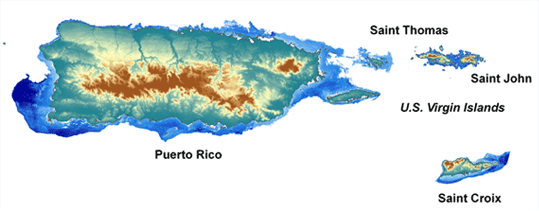
Coastal and landform topography of Puerto Rico and U.S. Virgin Islands. From NCCOS. Culebra and Vieques are idyllic small islands between Puerto Rico and the U.S. Virgin Islands (St. Thomas, St. John, and St. Croix).
We got a great view of the chain of islets that span the distance between Puerto Rico and its small island neighbors to the east as we flew at 1400 feet over the ocean expanse to our destination on Culebra.
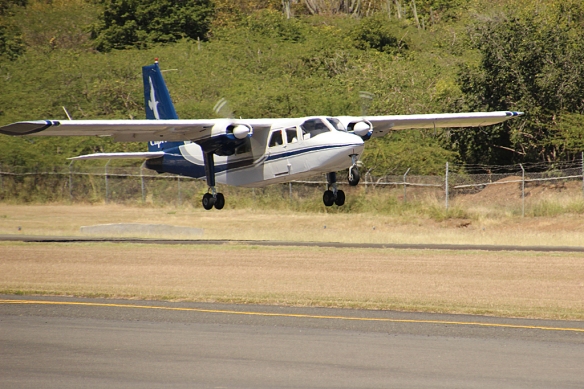
An 8-seater Cape Air plane took us on a half-hour flight from Puerto Rico to Culebra for a mere $45. I remembered to get my camera out of the luggage on the trip back to PR!
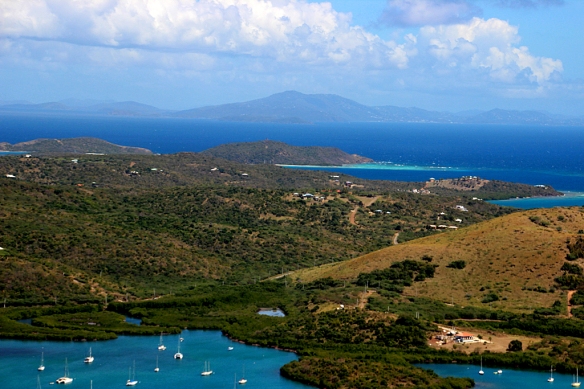
A view of Culebra looking east toward St. Thomas, U.S. Virgin Islands. The coastal shores and keys surrounding Culebra are protected as part of the U.S. National Wildlife Refuge system, which results in some of the most diverse and healthy coral reefs in the Caribbean and prime habitat for nesting seabirds.
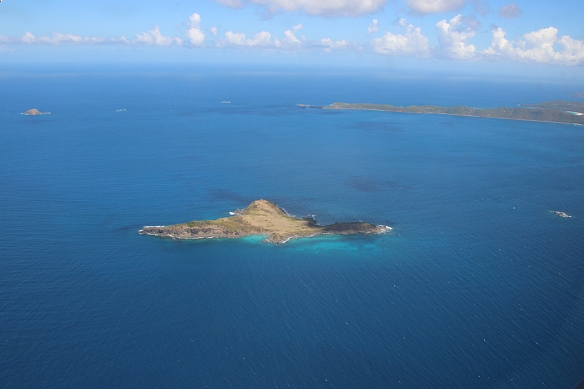
A tiny islet in the channel separating Puerto Rico and Culebra (seen in the distance). When is a rocky outcrop in the ocean too small to be called an island?
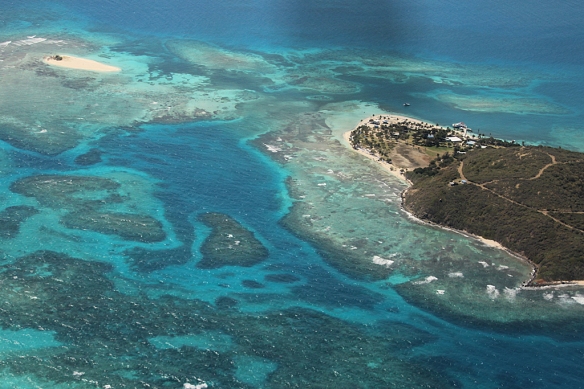
The extreme northeastern tip of Puerto Rico, showing coral heads and sandy shoreline that surround the island.
Although birds are highly mobile and able to navigate the mileage between mainland and islands fairly easily, there is nevertheless an ever diminishing number of species on islands as the distance from the mainland increases and/or the size of the island decreases.
Birds could settle on Caribbean islands by migrating eastward from Central Mexico (1026 bird species) or southward from Florida (510 species). To illustrate the “island effect” of distance and size: Cuba has 368 bird species in its 43,000 square mile expanse, while nearby but much smaller Puerto Rico (3400 square miles) supports 349 bird species, and Culebra (12 square miles) has just 110 species, many of which are only passing through on migration to other sites (only 43 species actually nest on Culebra).
Over time island birds often develop unique characteristics that separate them from their mainland ancestors, becoming unique to that particular place (endemism), like the Puerto Rican Lizard Cuckoo and the diminuitive Puerto Rican Tody (from an earlier post).


There is something magic about islands, even tiny ones.
I agree, and especially the tropical variety with its amazing blue waters.
Seeing all this beauty makes me feel just a tiny bit warmer here in frozen Chi-beria.
On an unrelated note, my Cardinal finally started to sing on Wednesday, two weeks later than usual but right on schedule for the predicted dawn to dusk date of 2/25. He didn’t sound very enthusiastic though.
Thanks for the update, Leslie. So the daylength cue works to get the singing started, but perhaps it is tempered by this miserably cold weather. MN-beria is still under the influence of a strong polar vortex; we’re working on a record breaking number of subzero nights here.
It looks like a beautiful place to retire to!
Wonderful climate, but unfortunately not cheap. Real estate is the same price as the U.S.–expensive. Food is mostly imported, with not much grown on the island, so not cheap either.
I love those shots from in the air. It gives a wonderful, beautiful perspective on a beautiful place (and the water looks so blue and inviting).
Oh yes, the water is wonderful, just the right temperature. The snorkeling was amazing–the best I have seen in the Caribbean, both coral and fish diversity superb!